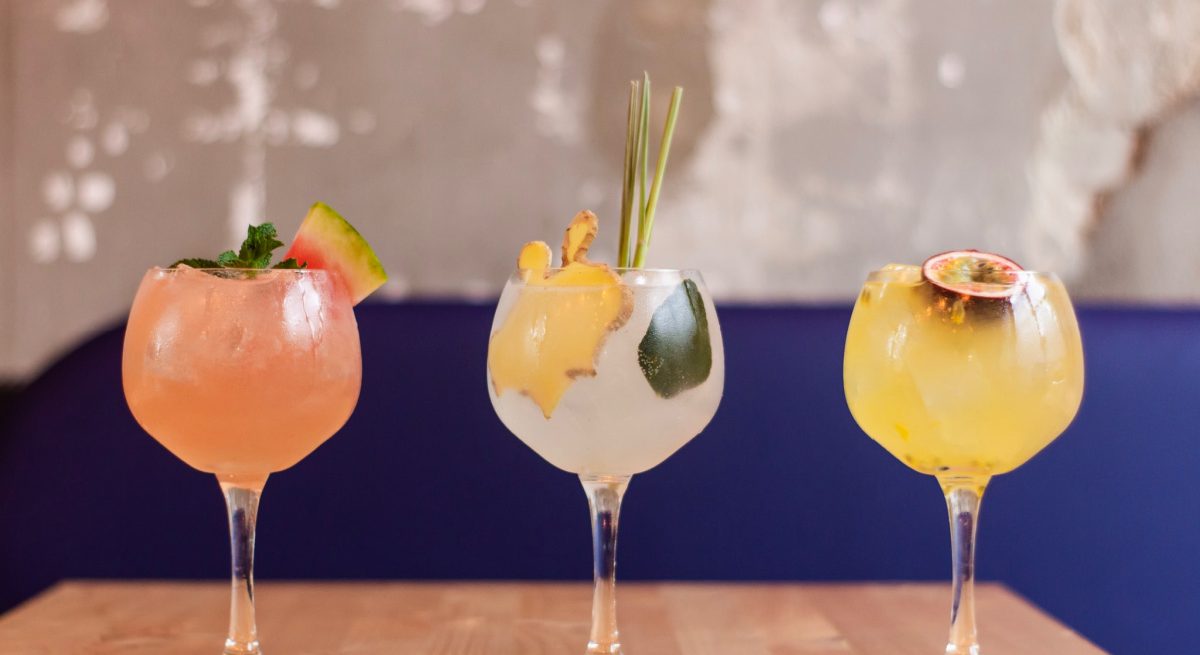What Restaurants Need to Know About RTD Adult Beverage Trends
3 Min Read By Ryan Close
As restaurants and bars struggle through the pandemic, the alcohol industry is suffering along with them. Despite a jump in store sales as consumers began drinking more at home, global alcohol sales are expected to fall about 12 percent in 2020, according to IWSR Drinks Analysis. In this challenging year, one bright spot for the industry has been the booming popularity of ready-to-drink (RTD) alcoholic beverages.
For the three years leading up to the pandemic, RTD alcoholic beverages were the fastest-growing category, up almost 20 percent, as sales of spiked seltzers such as White Claw and Bon & V!v took off. In 2019, The Insight Partners, a research firm, estimated that the global RTD alcoholic beverage market would reach $40 million in 2027 from $26 million in 2018.
The pandemic has only made RTDs even more popular. While it won’t last forever, consumers are unlikely to give up RTD beverages even after returning to restaurants and bars. The convenience, variety and hand-crafted experience RTDs offer will keep them on consumer’s shopping lists for years to come.
So, where is the RTD alcoholic beverage market headed in 2021? The key trends to watch can be summed up as “more”– more choices, more premium ingredients, more health-conscious recipes, more Instagram-worthy branding and more tequila. Here are the five major trends shaping the RTD alcoholic beverage market next year.
A Focus on Wellness
As consumers have become more aware of how what they eat and drink affects their wellbeing, brands have responded with a new breed of RTD beverages. Replacing the sugar-laden drinks of the early days of the category are recipes lower in sugar, carbohydrates or alcohol.
In keeping with consumers’ rising interest in organic foods and products, brands will introduce more beverages made with organic ingredients, including organic liquors. Going forward, companies increasingly will compete for the wellness market by being transparent about their ingredients and touting the health consciousness of their recipes.
Premium and Celebrity Brands
Casamigos grabbed many headlines when George Clooney and his partners founded the tequila brand in 2013, and it quickly became a top-selling spirit. More celebrities have followed. Matthew McConaughey, Ryan Reynolds, Cameron Diaz, celebrity chef Guy Feiri and even Bob Dylan have launched alcoholic beverages, and more are likely to do so.
The trend toward celebrity-owned brands dovetails with the demand for premium products. IWSR sees premiumization to be a primary driver of sales of gin, vodka and tequila going forward. RTD beverages increasingly will use premium ingredients as more brands target consumers, who are willing to pay for it, are looking for high-end and luxury brands.
Tequila All Around
Tequila is the up-and-coming favorite among consumers worldwide. Tequila is so popular with consumers that it has kept pace with the RTD alcoholic beverage sector. Global tequila sales increased by 5.5 percent in 2019, and 8.5 percent in the U.S. E-commerce liquor store Drizly reported sales have more than doubled over the last five years. Strong tequila sales have continued into 2020. As of June, Casamigos was the second biggest seller on the platform, behind Tito’s Vodka. Beverage makers have responded by introducing RTD tequila-based drinks to the market, including the Dulce Vida Margarita, Half-Seas Paloma and Mamitas Tequila & Soda.
Several factors are driving interest in tequilas. Consumers see it as a lower-calorie and healthier choice than wine or beer. Tequila also has a sense of history and tradition that brands are successfully using to market to Millennials and other consumers who respond to storytelling and a feeling of authenticity. New and premium tequila versions will continue to hit the market in 2021, including barrel-aged dark tequila and smoked tequila.
A Hand-Crafted Experience
As consumers began enjoying their drinks at home during the pandemic, interest in cocktails has soared. Making cocktails at home not only allows consumers to know exactly what they are drinking but unleashing their inner mixologists means they can add their flare to a drink–whether an unexpected garnish or more of their favorite spice.
RTD beverages are riding that trend, making it easier for consumers to participate in cocktail culture without the expense and inconvenience of needing to stock up on dozens of spirits or skip recipes calling for specialty liqueurs or other less commonly used ingredients. Brands will increasingly address the trend by offering more complex and diverse drinks that appeal to consumers’ more sophisticated palettes and increased knowledge of cocktails.
Instagram for the Win
Did they really drink it if they didn’t post a photo? As cocktail culture grows, so does the number of Instagram posts of colorful drinks, inventive garnishes and pretty glasses. As consumers show off their cocktail literacy on social media, brands will keep pace by ramping up their visual game as well.
As the RTD category continues to expand, brands will compete for Instagram-worthiness by paying more attention to design. Everything from the packaging to advertising will reflect a heightened visual awareness, with brands featuring palettes and moods that appeal to their target customers. As new drinks come to market in 2021 and beyond, expect to see more emphasis on logos and signature graphics as RTD beverage makers compete for the attention of increasingly demanding and sophisticated consumers.


